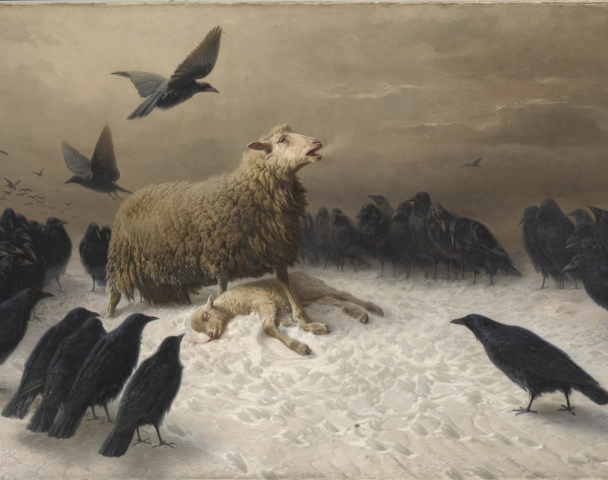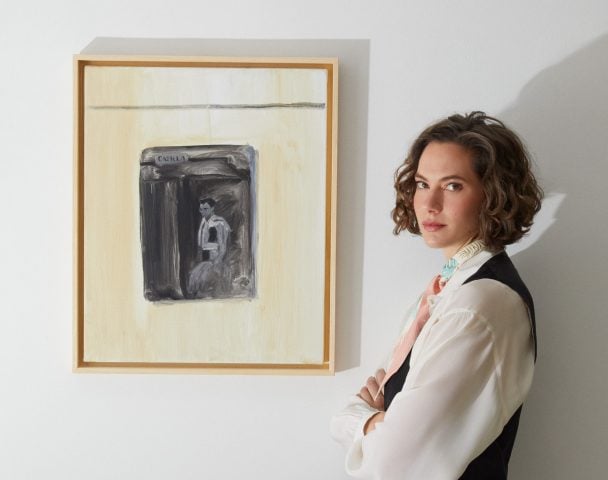Art World
Art Bites: How One Man’s Handmade Architectural Marvel Altered the L.A. Skyline
The Watts Towers, were constructed from scrap metal and found objects. The spires are architectural marvels and monumental testaments of human ingenuity, outsider art, and vision.
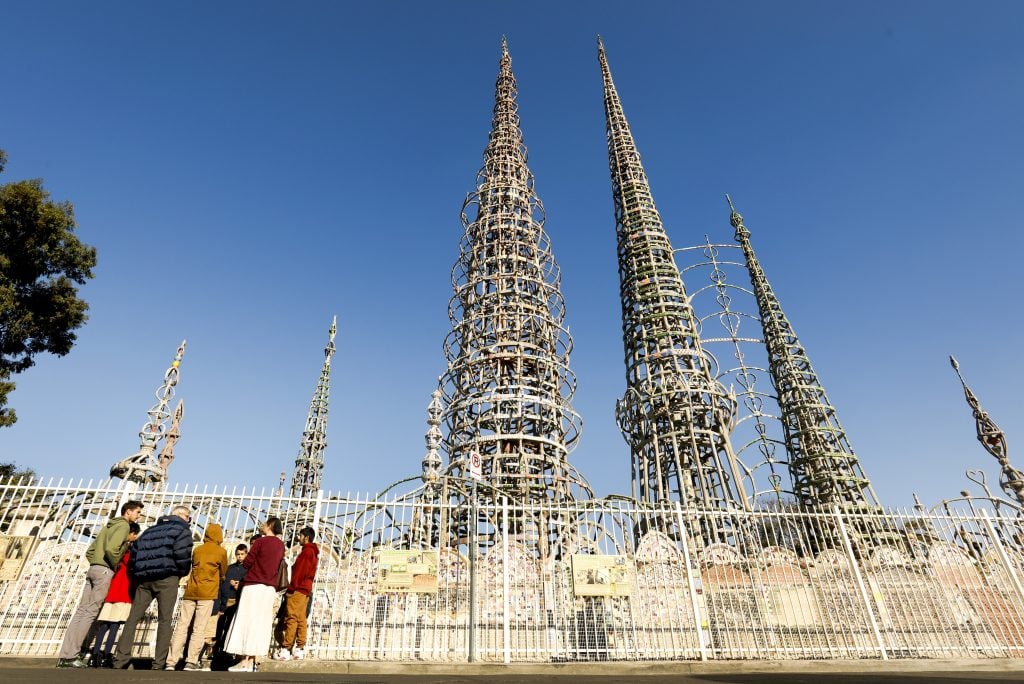
Over 100 years since their creator Sabato “Sam” Rodia first began constructing them, the Watts Towers are still standing. Renowned for their brute allure and sculptural marvel, the towers, erected like Gaudian antennas, are located in the Watts neighborhood of southern Los Angeles. The landmarks are a wonder of human ingenuity and outsider art: a collection of 17 interconnected pylons spiraling almost 10 stories high, made using scrap metal and found objects, built by a man who had no formal training as either an artist nor an engineer.
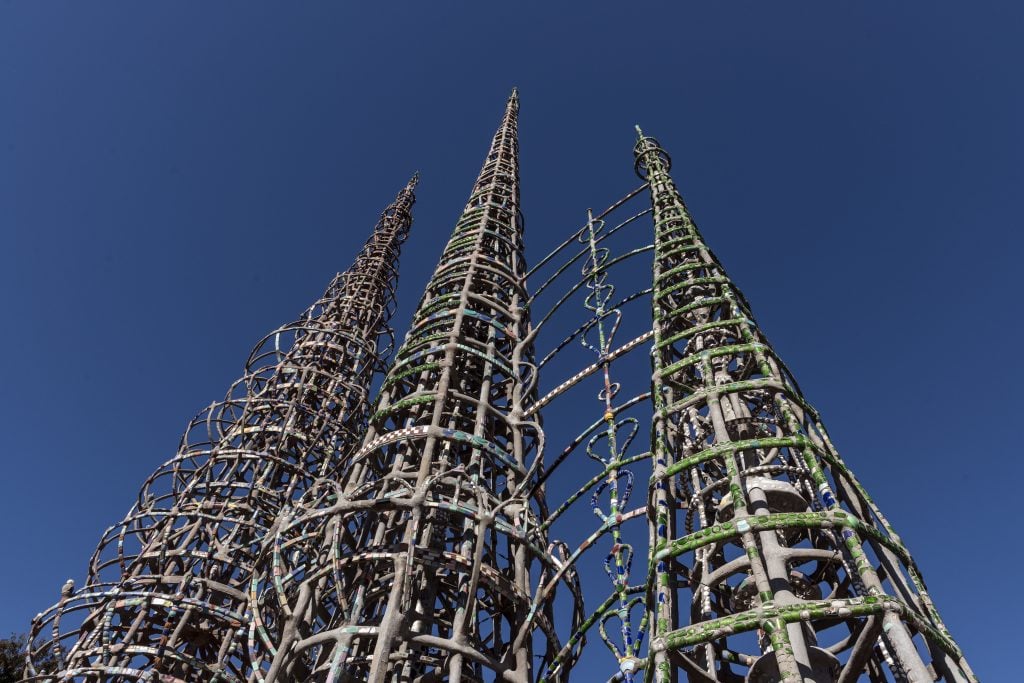
Three towering, spiraled metal structures of the Watts Towers against a clear blue sky (Photo by Carol M. Highsmith/Buyenlarge/Getty Images)
Rodia was born in 1879 in Serino, Italy. He immigrated to the United States around 1894 where he worked many jobs: miner, quarryman, logger, telephone lineman, and eventual tile setter. All would factor in to the making of his masterpiece.
Rodia first settled in Watts, then an impoverished, diverse city on the outskirts of Los Angeles, at the age of 42, after a series of failed relationships and a struggle with alcoholism. He purchased a triangular slice of land with train tracks running just outside it. His home would rattle with the roar of freight trains and trams chugging past it. That plot of land would become host to his fantastical constructions.
“I know know I wanted to do something, I said I’m gonna do something, so I did something,” Rodia said in the 1957 documentary The Towers.
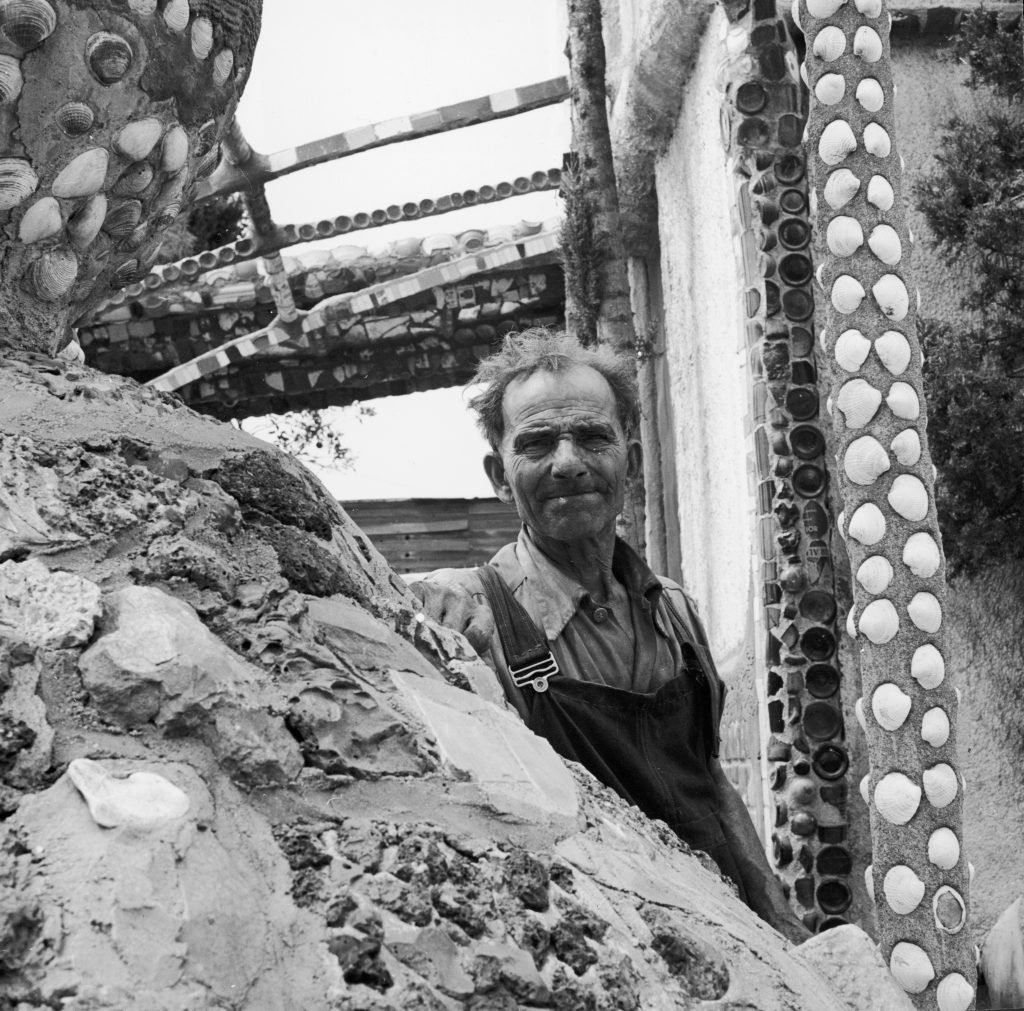
1951, Portrait of Italian-born architect Simon Rodia (1879 – 1965) standing within Watts Towers. (Photo by Getty Images/Getty Images)
He started his project in 1921 after he quit drinking. Rodia began collecting any building materials he could get his hands on: discarded metal from mattress frames and trashed ceramics from the tile factory he worked at. He built the towers entirely alone, by hand, with no nails. scaffolding, or even planned drawings. The tallest, West Tower, soars at just under 100 feet tall.
Strapped with simple tools and a bucketful of shards and seashells, the wiry Rodia would paw his way up and down the rungs of his spires time and time again, like a spider weaving its web. He wrapped the scrap metal joints in wire mesh for the towers’ bases, with no welding. He would then adorn the bases’ exterior with a crust composed of fragments from glass soda bottles, ceramic mugs, and seashells —anything colorful or shiny he might find—all glued together with a cement mixture of his own concoction. Over 25,000 seashells gild the towers.
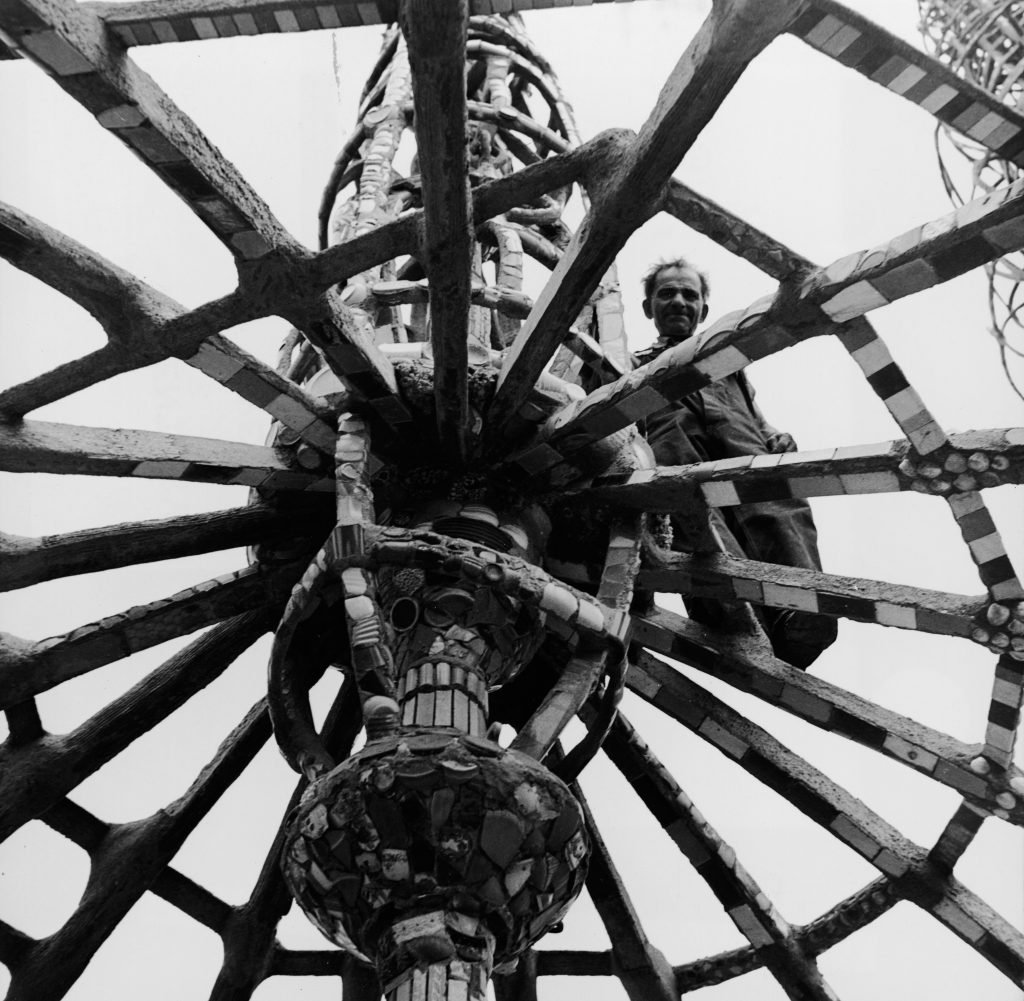
Italian-born American sculptor and designer Simon Rodia stands atop a dome at Watts Towers (Photo by Hulton Archive/Getty Images)
Rodia’s creations are modeled after the wooden ceremonial obelisks or “lilies” that are carried on the shoulders of devotees at the Festa de Giglia in Nola, Italy, a city neighboring the Italian commune where he was born. When asked why he decided to build the towers, the 4 ’10 man never gave the same answer twice: “To do something big,” was the gist of it.
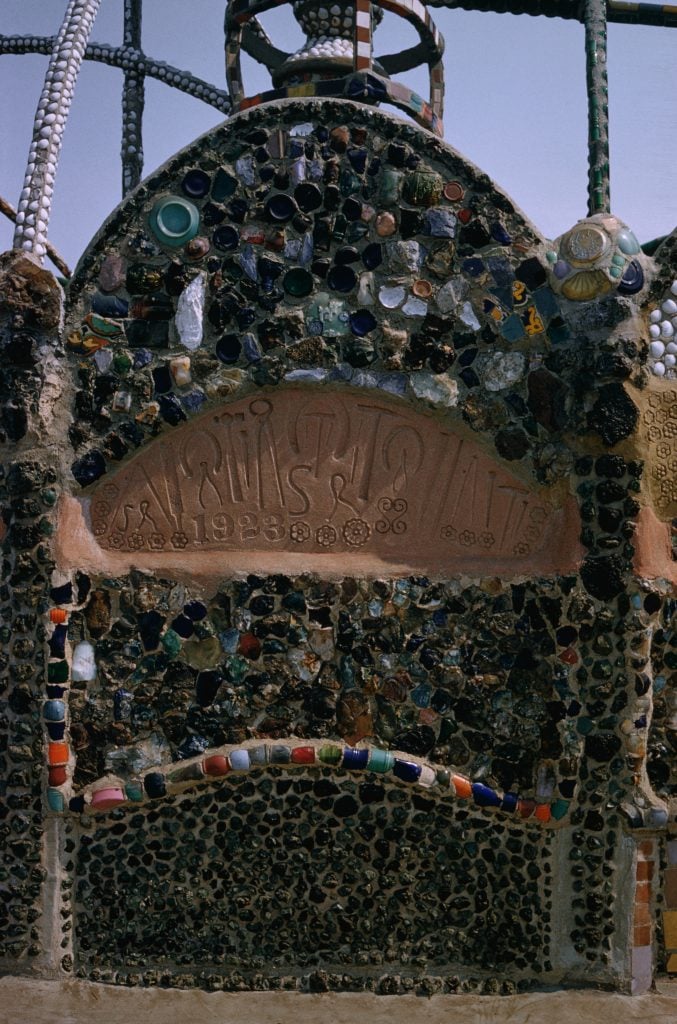
An archway at Nuestro Pueblo consisting of a mosaic of glass, ceramic, and other found objects. The concerte is embossed with the simple tools Rodia used to build his mammoth structures, as well as his initials. (Photo via Getty Images)
Rodia named the sliver of land Nuestro Pueblo, in honor of the diversity of Watts’s community, composed of Black, Hispanic, and Asian Americans families at the time. His neighbors, however, often regarded his creations with suspicion. The mysterious, looming structures were misconstrued as being radio towers transmitting secret messages to Axis forces in the 1940s. They couldn’t see Neustro Pueblo as it is seen today, as one of the world’s greatest examples of Outsider Art, art created by self-taught individuals who lack formal training and have minimal or no exposure to the conventions of the traditional art world. The compound was never privatized (Rodia never made a penny off his magnum opus).
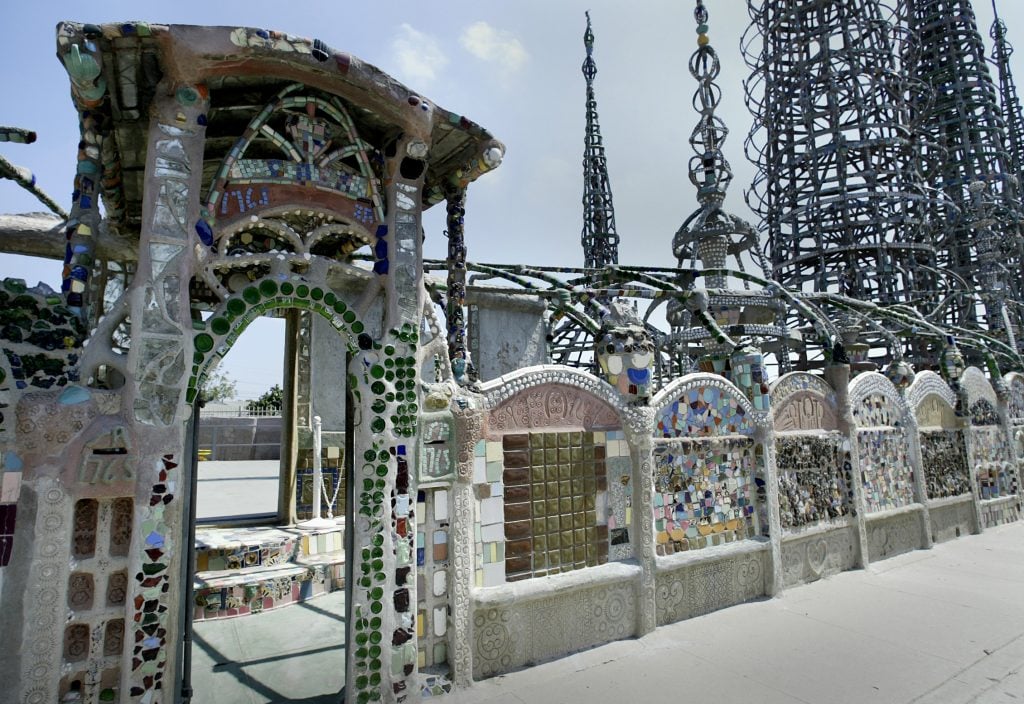
A street view of the Nuestro Pueblo compound (Photo by Robert Lachman/Los Angeles Times via Getty Images)
When he finished the towers 34 years later, then in his 70’s, Rodia up and left the land. He bestowed his property and his life’s work to his neighbor, and moved to Martinez, north of San Francisco, where his sister lived, never to return. He died in 1965, without ever seeing his spires again. Upon his death, he was venerated by Italian sculptor Gio Pomodoro who dubbed Rodia “the innocent Gaudi of California.”
The ownership of the land then moved through a series of hands, but before the towers became recognized as the historic masterpiece that they are, the city of LA tried to tear them down.
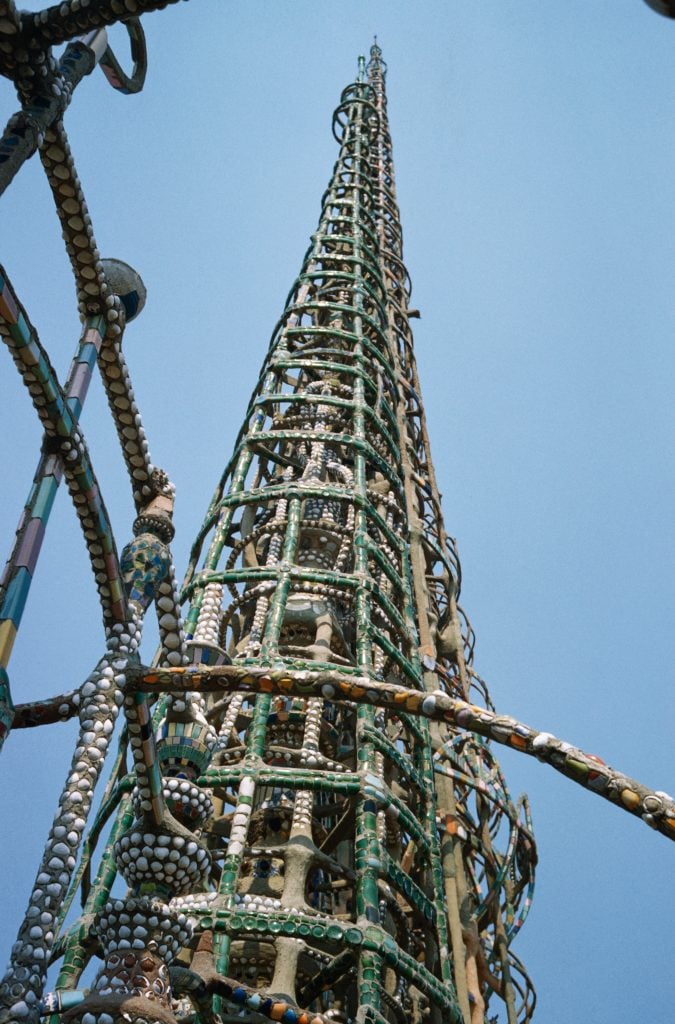
A closeup of the textured, technicolor aestehtic of the towers. (Photo via Getty)
In the late 1950s, the Los Angeles Department of Building and Safety decided that the towers, which were built without permit or inspection, were a danger to the public. In response, aerospace engineer Bud Goldstone, an advocate for Nuestro Pueblo, convinced the government that a stress test should be conducted to determine the structures’ soundness. So, a crane was brought in and hooked up to the West tower. It tugged at the edifice, applying 10,000 pounds of pressure to it. The audience of hundreds, consisting of civil servants and art aficionados, cheered when the winch whirred and overheated as the pylon refused to budge. Forced to remove the demolition order, the government let the towers be.
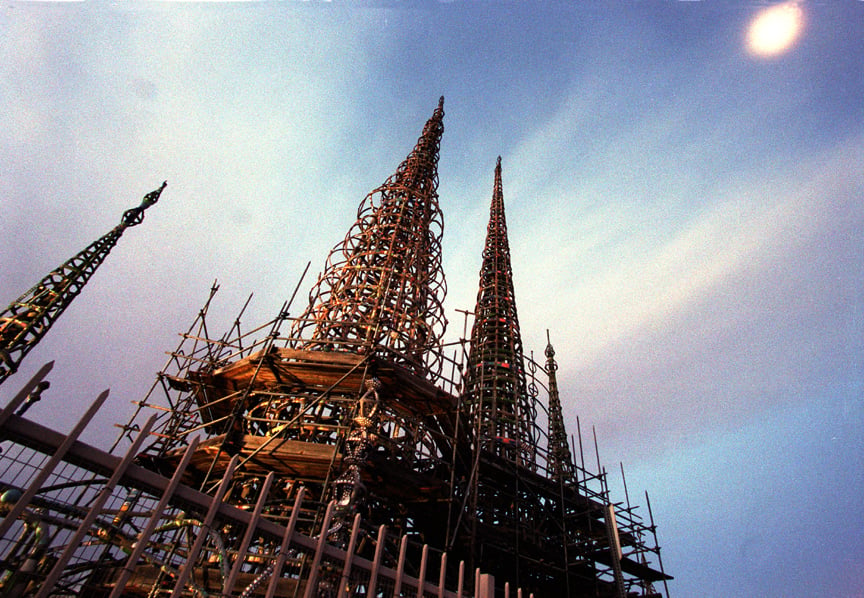
Moon shines over Watts Towers with scaffolding all around them. (Photo by Bob Chamberlin/Los Angeles Times via Getty Images)
Since then, the Watts Towers have undergone multiple renovations. Today, the towers are under the stewardship of the LACMA, and the land is home to the Watts Towers Arts Center. The center is considered a beacon of education in the arts for the community–an appropriate legacy for a man who changed the face of his city, and left a mark on the world emblematic of the power and peculiarity of the human spirit. The Watts Towers persist as a testament to Rodia’s genius as both a dazzling outsider artist and an engineer of intuitive brilliance.




